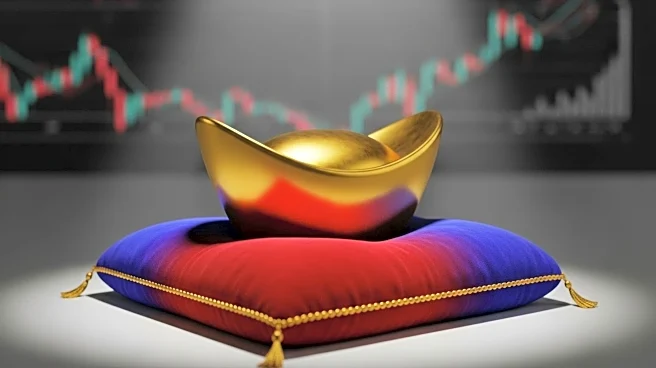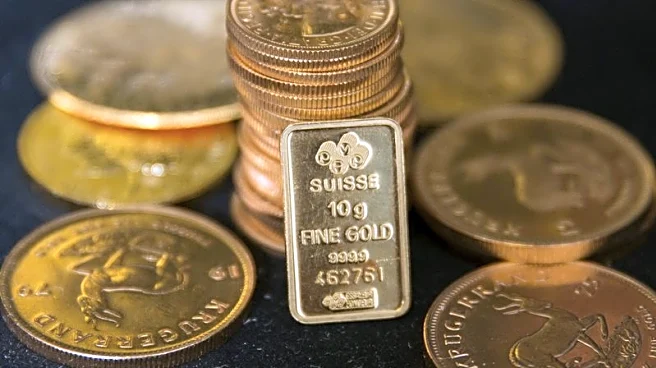What's Happening?
Goldman Sachs has increased its forecast for gold prices to $4,900 per ounce by December 2026, up from a previous target of $4,300. This adjustment reflects ongoing global economic and geopolitical uncertainties, sustained central bank buying, and strong inflows into Western ETFs. The surge in gold prices has been significant, with spot gold reaching a historic peak above $4,000 an ounce. Analysts highlight a fundamental transformation in reserve management behavior, with central banks continuing to accumulate bullion despite record prices. This trend is described as a structural shift, indicating a long-term change in investment strategies.
Why It's Important?
The rise in gold prices signifies a shift in global investment strategies, with gold becoming a preferred safe-haven asset amid economic uncertainties. This trend could impact U.S. industries, particularly those involved in commodities trading and investment. As central banks and retail investors increase their gold holdings, the demand for gold may continue to rise, potentially affecting the U.S. dollar's position as a global reserve currency. The increased gold prices could also influence inflation rates and monetary policy decisions in the U.S., as the Federal Reserve may need to consider these factors in its economic assessments.
What's Next?
The ongoing geopolitical risks, central bank accumulation, and anticipated Federal Reserve easing suggest that the bull market for gold may continue. As demand for safe-haven assets spreads from institutions to households, the revaluation of these assets could be in its early stages. Analysts predict further increases in gold prices, with potential impacts on global financial markets and investment strategies. Stakeholders, including investors and policymakers, will likely monitor these developments closely to adjust their strategies accordingly.
Beyond the Headlines
The shift towards gold as a safe-haven asset reflects broader economic and geopolitical concerns, including potential conflicts and financial instability. This trend may lead to long-term changes in how countries manage their reserves and approach international trade. The increased focus on gold could also influence cultural perceptions of wealth and security, as individuals and institutions prioritize tangible assets over traditional financial instruments.











